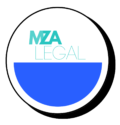I often get questions from people about protecting intellectual property (IP). I am not an IP attorney. However, I do know the difference between the four types of IP protection. So, I decided to pen a post explaining the basics of intellectual property.
First, let me start by defining intellectual property. A piece of intellectual property is a creative work or invention that is eligible for legal protection. IP protection is important because it grants the owner rights to prevent others from using their IP. If the IP is useful or desirable, the owner can sell licenses to others for permission to use it. For example, in order to screen a movie a theater company must pay for the right to show it. There are four types of (IP) protection. They are copyrights, trademarks, patents, and trade secrets.
Copyright Protection
Copyright law provides protection to creative works of authorship. Books, artwork, designs, music, and computer code are all examples of IP that can be protected by a copyright. Copyright protection prohibits others from creating copies or displaying the work without the owner’s permission. It also prohibits others from distributing or creating new works using the original copyrighted work.
A creative work can receive copyright protection if it is original and fixed on a tangible medium. Fixed on a tangible medium means that the work can be seen, as opposed to an idea in one’s mind. The author or creator of a work can register for copyright protection by filing an application with the US Copyright Office. One does not need to register an original work to receive copyright protection. However, registration does make it easier to enforce that protection.
Trademark Protection
Next, there are trademarks. A Trademark is a name, word or symbol that distinguishes the source of a service or product. The McDonald’s golden arches are a prime example. Trademark protection prevents others from attaching a protected name or symbol to a similar product. For example, it would prevent a new computer company from using the Apple logo. Trademark protection allows companies to create a distinctive brand that consumers recognize. It also helps guard against counterfeiting.
To receive protection, a mark must be distinctive. The more distinctive the mark is, the more likely it is to be protectable. It is also important to note that trademark protection is intended to prevent others from using a trademark in a way that is likely to confuse consumers about the source of a product or service. So, the use of similar names or marks in different industries might not constitute infringement. For example, if I created a line of appliances called American Appliances, American Airlines would likely have a difficult time forcing me to change the name.
Like creative works protected by copyright, trademarks do not have to be registered for protection. However, you can register a trademark on the USPTO Website. You can also register a trademark at the state level.
Patent Protection
Patents provide protection for new ideas and inventions. Specifically, they are used to protect new and useful processes, machines, and compositions of matter. Pretty much any new creation can be patented including medications, genetically modified plants, and step by step instructions. Patent owners have the right to exclude others from using their invention for 20 years. The purpose behind patents is to encourage innovation. The idea is that allowing innovators exclusive rights to their inventions for a limited period of time incentivizes innovation, while balancing out the need for public good.
In order to patent something it must be novel, useful and non-obvious. A novel creation is one that is the first of its kind. A useful creation is simply one that serves any helpful purpose. Finally a non-obvious creation is one that is innovative enough to be considered unique. You must file for a patent with the USPTO. Proper patent registration requires specialized skill. Therefore, it is best to have professional assistance when registering a patent.
Trade Secrets
Finally, there are trade secrets. A trade secret is confidential information that gives a business an advantage over others. For example, the Krabby Patty secret formula would be a trade secret. Real world examples include customer lists and manufacturing processes. It is not necessary to register a trade secret. In order to be protected, a trade secret must be wrongfully obtained and used by someone without the rightful owner’s permission.
Have Intellectual Property That You Need Protected?
As I mentioned above, I am not an intellectual property attorney. So I will not help you file for a patent or represent you in a trademark infringement case. However, M. Zane {+} Associates is always here for folks in the Philadelphia area who have legal questions, but aren’t sure where to turn. If that is you, feel free to give us a call at 267-475-7052.

What Great Information! Knowledge is Power, many people have Great ideas and take for granted how easy it is for someone to take your idea and build on it.
Thanks for the Info